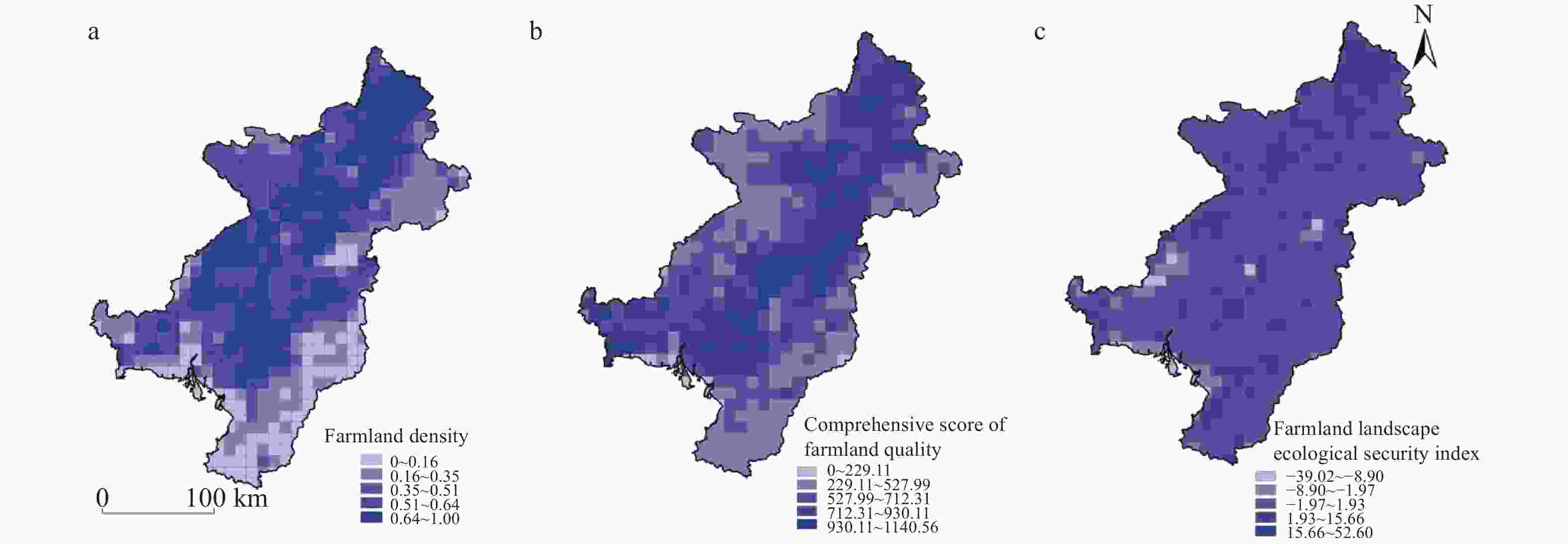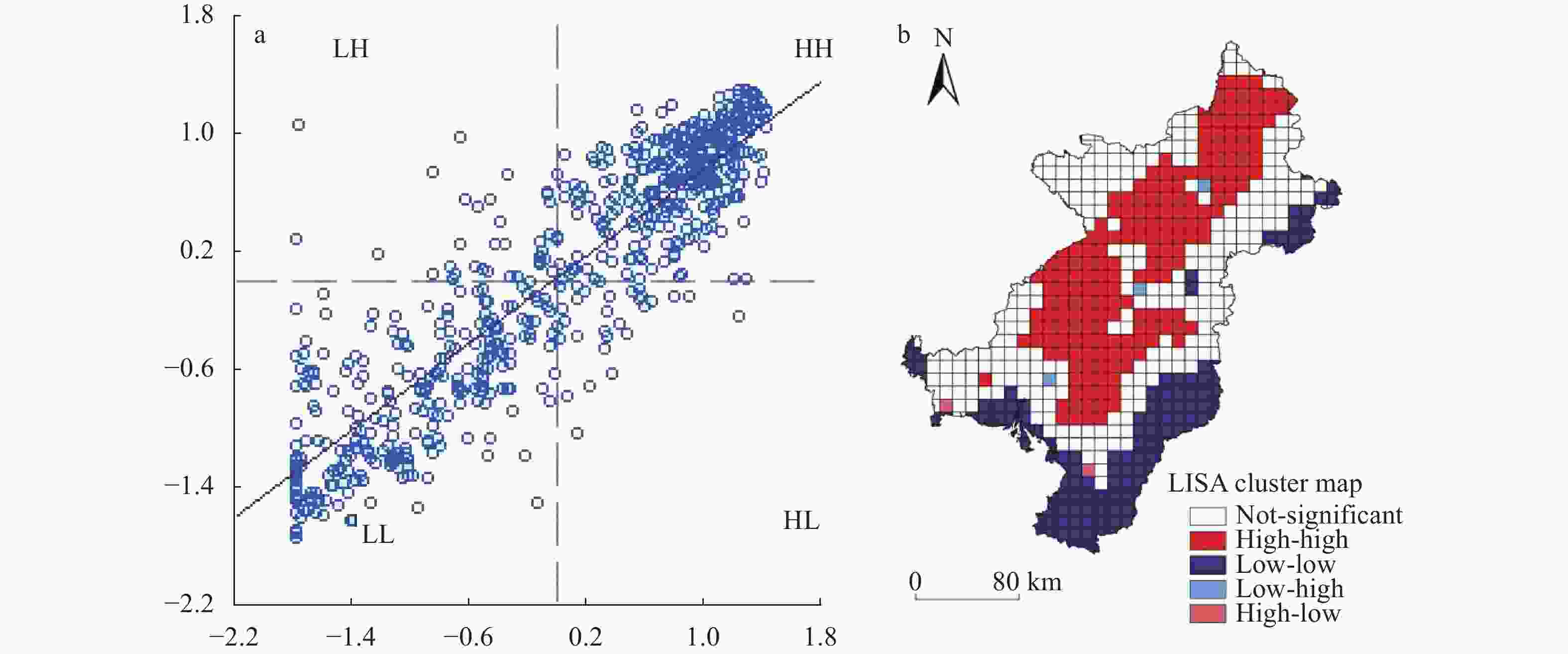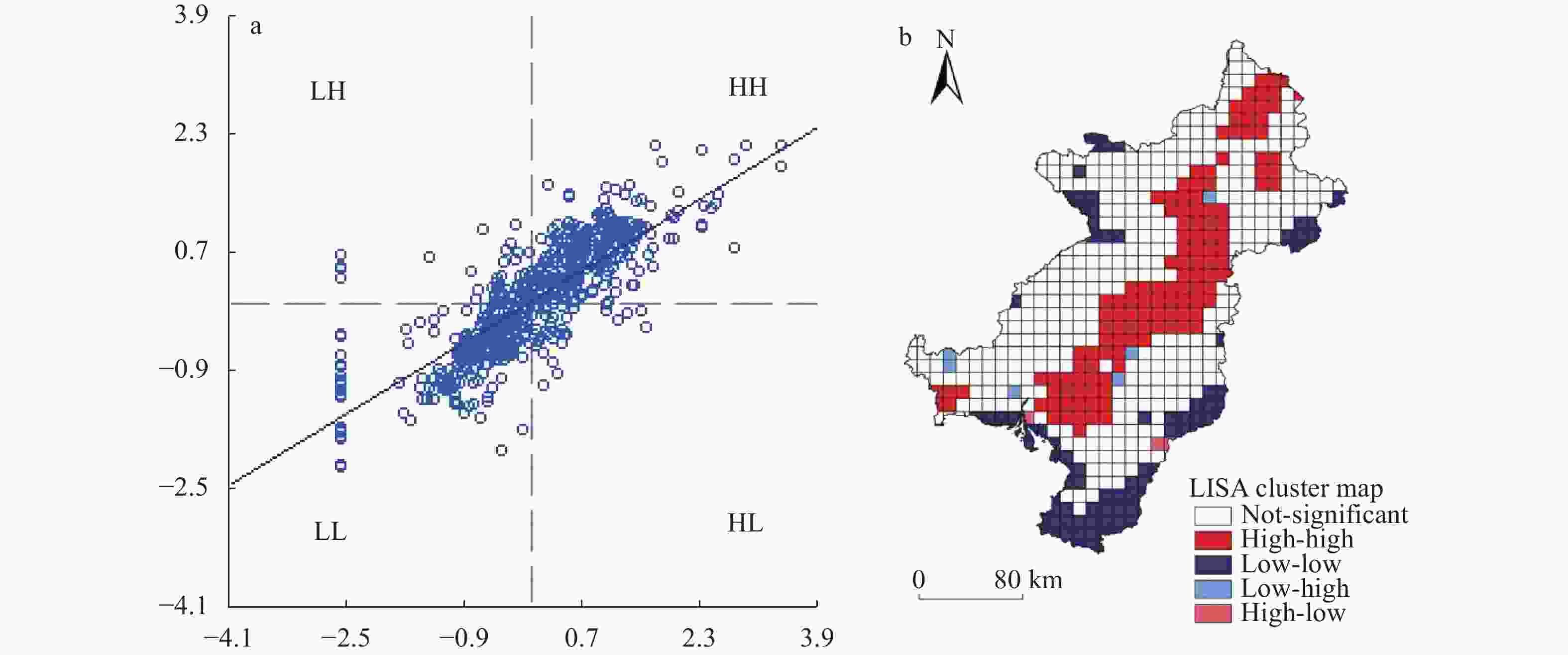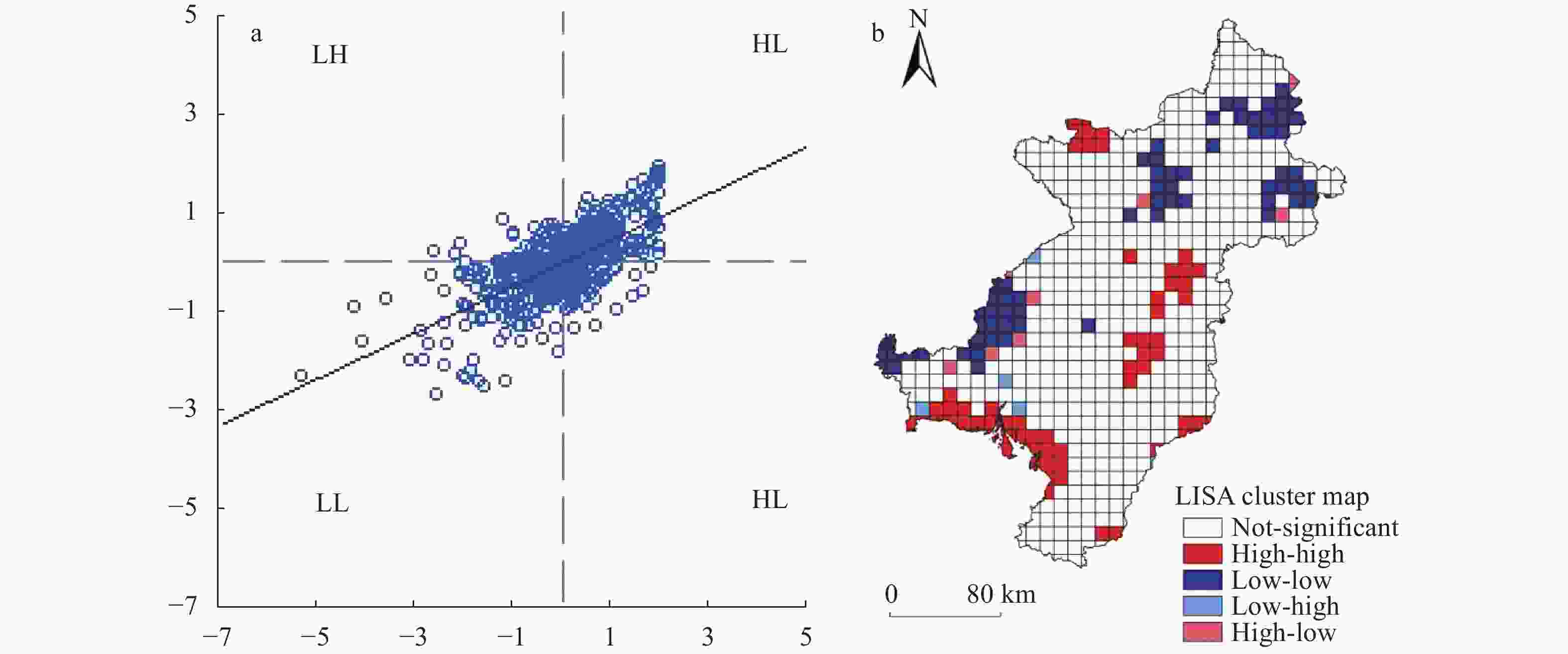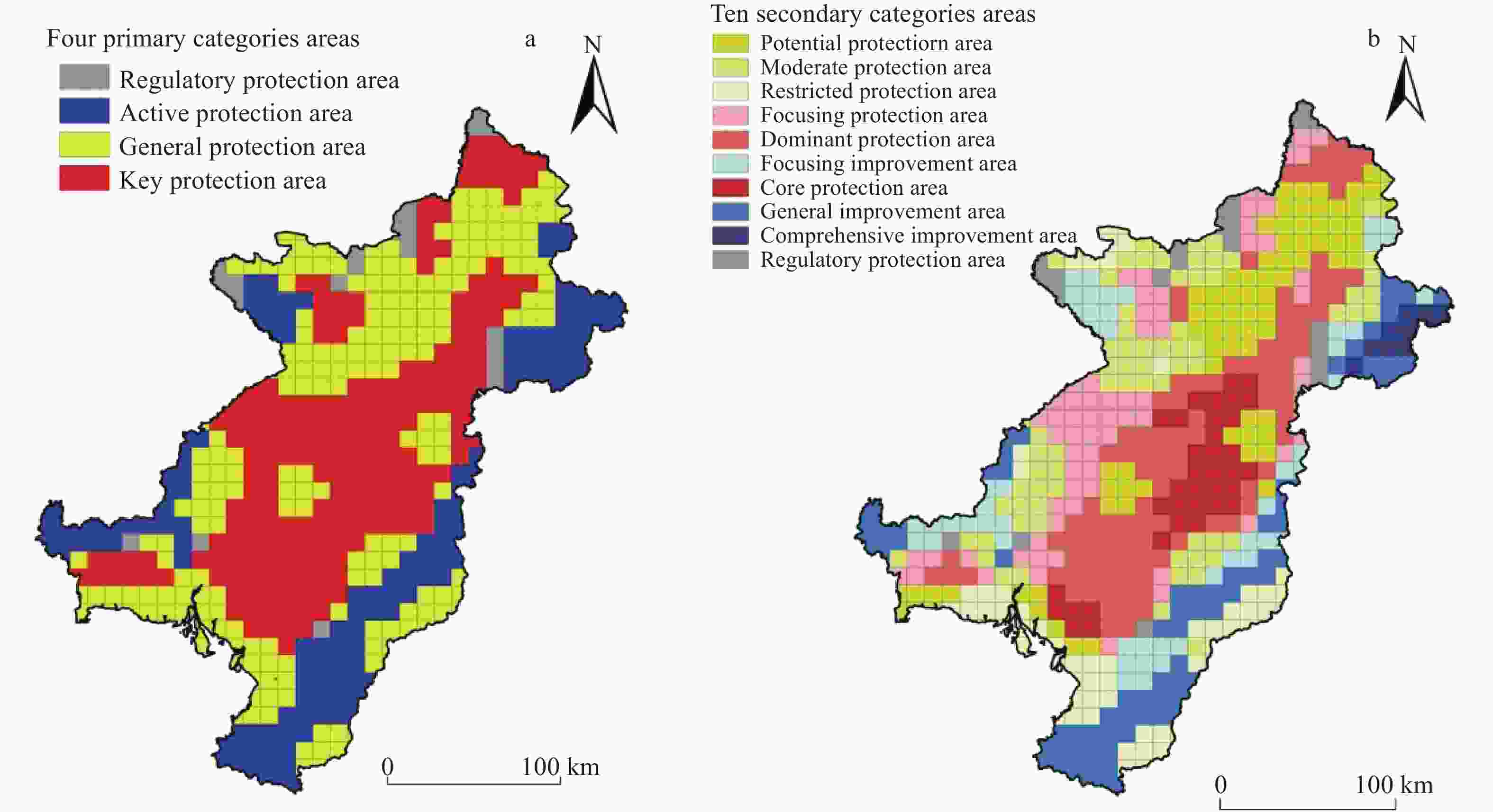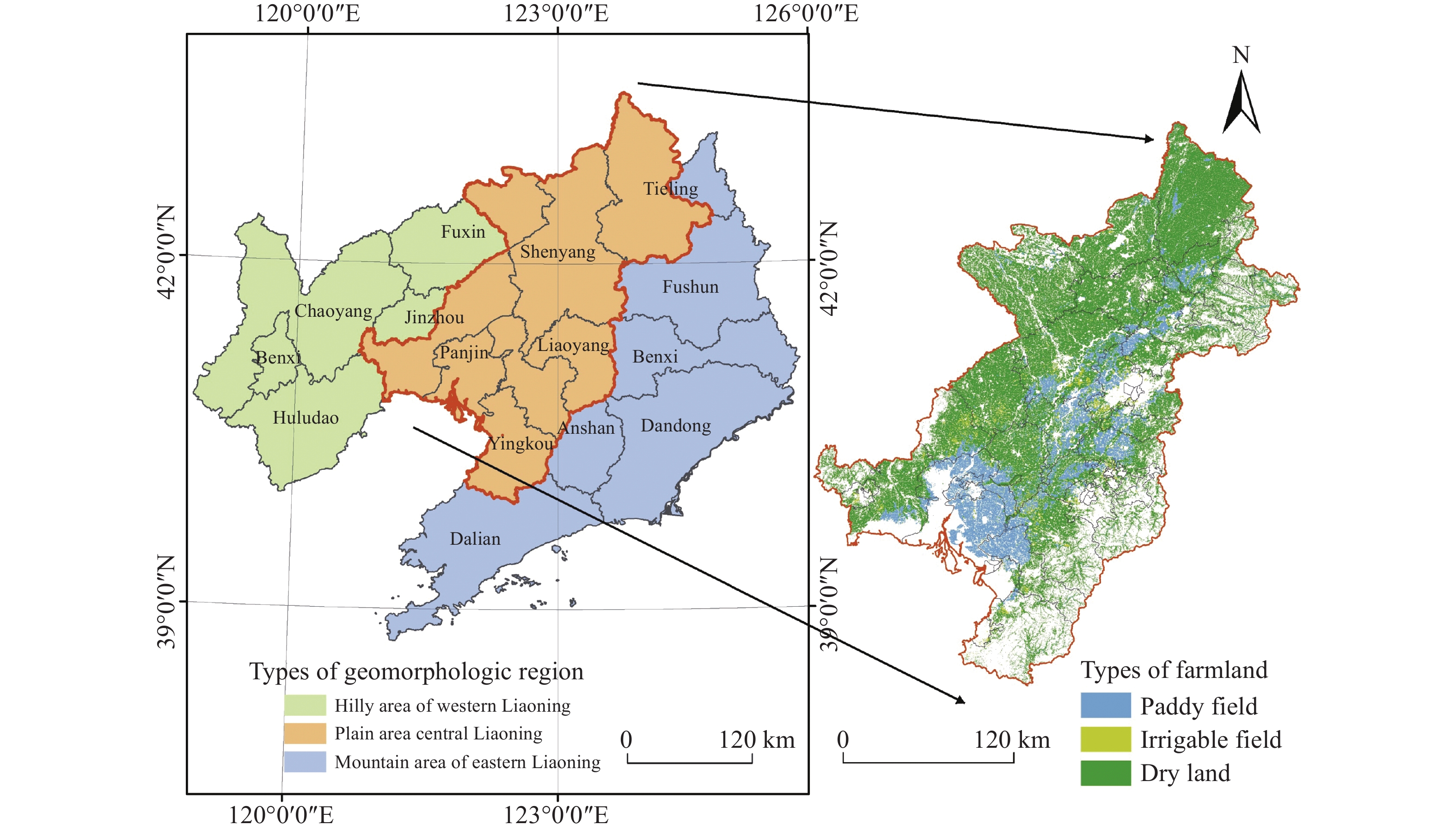Trinity protection and evaluation of farmland ecosystem in the Central Plain of Liaoning, Northeast China
-
摘要: 耕地是必不可少的自然资源, 耕地保护日益引起全球范围内的关注。耕地数量、质量和生态三位一体保护是一个层次化、系统化的概念, 代表了传统耕地保护在理论和技术方面向现代耕地保护转变的创新。本研究以辽宁中原地区为例, 采用空间自相关分析方法评价耕地三位一体的空间集聚特征, 运用空间叠加分析划分耕地三位一体保护区。结果表明, 耕地数量、质量、生态的空间集聚分布类型: 高-高型(面积占比分别为36.2%、24.2%、9.7%)、低-低型(面积占比分别为19.5%、12.6%、11.6%)、高-低型(面积占比分别为0.6%、1.2%、0.7%)、低-高型(面积占比分别为0.4%、0.4%、1.3%)和非显著型(面积占比分别为43.3%、61.4%、76.7%)具有明显的相关性。空间集聚度排序为: 耕地数量>耕地质量>耕地生态条件, 也反映了三位一体保护多样性的分布和利用特征。在此基础上, 通过对耕地数量、质量、生态的高型、低型和非显著型进行排列组合, 建立耕地三位一体保护分区, 最终划分为4个一级区和10个二级区。研究表明, 通过高标准农田和永久基本农田建设等土地整治工作和保护性耕作体系, 可以在耕地数量、质量、生态三位一体保护中最大限度提高耕地高型特征影响以及消除低型影响。Abstract: Farmland is an essential natural resource, and in recent times, farmland protection has become an issue of increasing global concern. Trinity protection of farmland quantity, quality, and ecological conditions (FQQEC) is a systematic hierarchical concept that encompasses the innovative application of theory and technology toward the transformation from traditional to modern farmland protection. In this empirical study, which focuses on the Central Plain of Liaoning, China, we sought to assess the spatial agglomeration of FQQEC by utilizing spatial autocorrelation analysis and dividing the farmland trinity protection zone based on spatial overlay analysis. The results revealed that the distribution of the spatial agglomeration of FQQEC showed distinct correlations of high-high (36.2%, 24.2%, and 9.7% of the total area for farmland quantity, quality, and ecological conditions, respectively), low-low (19.5%, 12.6%, and 11.6% coverage), high-low (0.6%, 1.2%, and 0.7% coverage), low-high (0.4%, 0.4%, and 1.3% coverage), and non-significant (43.3%, 61.4%, and 76.7% coverage) types, and the rank order of the degree of spatial agglomeration was farmland quantity > farmland quality > ecological conditions, which also represented the diverse distribution and utilization characteristics of FQQEC. On the basis of these findings, trinity protection zoning of farmland was established through different permutations and combinations of H-, L-, and non-significant types, and finally grouped into four primary and ten secondary categories. Collectively, our results indicate that wherever possible, it is essential to enhance the desirable impacts of the H type and eliminate the detrimental impacts of the L type in the FQQEC, based farmland consolidation, including the establishment of high-standard and permanent farmland, and adopting sustainable agricultural practices.
-
Table 1. LISA cluster areas of farmland quantity, quality, and ecological conditions
LISA cluster Farmland quantity Farmland quality Farmland ecological conditions km2 (% of total area) High-high 19 316.0 (36.2%) 12 915.0 (24.2%) 5173.9 (9.7%) Low-low 10 411.0 (19.5%) 6850.3 (12.9%) 6198.7 (11.6%) Low-high 303.1 (0.6%) 581.6 (1.1%) 373.4 (0.7%) High-low 201.6 (0.4%) 225.6 (0.4%) 682.0 (1.3%) Not-significant 23 084.8 (43.3%) 32 744.0 (61.4%) 40 888.5 (76.7%) Table 2. Farmland protection zoning based on local spatial autocorrelation of farmland quantity, quality, and ecological conditions in the Central Plain of Liaoning Province
Primary category area Secondary category areas Permutations and rate combination Area (%) Key protection area Core protection area H/H/H 6.8 Dominant protection area H/H/N, H/N/H, N/H/H 19.4 Focusing protection area H/N/N, N/N/H, N/H/N 12.2 Active protection area Potential protection area H/H/L, H/L/H, L/H/H 14.4 Restricted protection area L/L/H, L/H/L, H/L/L 8.6 Moderate protection area H/L/N, L/H/N, H/N/L, L/N/H, N/L/H, N/H/L 12.9 General protection area Comprehensive improvement area L/L/L 1.7 General improvement area L/L/N, L/N/L, N/L/L 12.0 Focusing improvement area L/N/N, N/N/L, N/L/N 8.7 Regulatory protection area Regulatory protection area N/N/N 3.3 H, L, and N represent the high-value, low-value, and non-significant aggregation-type areas, respectively. The third column shows the permutations and combinations of farmland quantity/quality, and ecological condition clustering areas [presented as respective triplets from left to right (e.g., H/H/H)]. -
[1] ANSELIN L. 2010. Local indicators of spatial association-LISA[J]. Geographical Analysis, 27(2): 93−115 doi: 10.1111/j.1538-4632.1995.tb00338.x [2] CHANEL O, DELATTRE L, NAPOLEONE C. 2014. Determinants of local public policies for farmland preservation and urban expansion: a French illustration[J]. Land Economics, 90(3): 411−433 doi: 10.3368/le.90.3.411 [3] CHENG L, JIANG P H, CHEN W, et al. 2015. Farmland protection policies and rapid urbanization in China: a case study for Changzhou City[J]. Land Use Policy, 48: 552−566 doi: 10.1016/j.landusepol.2015.06.014 [4] FIRBANK L, BRADBURY R B, MCCRACKEN D I, et al. 2013. Delivering multiple ecosystem services from Enclosed Farmland in the UK[J]. Agriculture, Ecosystems & Environment, 166: 65−75 [5] FUKASE E, MARTIN W. 2014. Who will feed China in the 21st century? income growth and food demand and supply in China[J]. Journal of Agricultural Economics, 67(1): 3−23 [6] HUANG J F, WANG R H, ZHANG H Z. 2007. Analysis of patterns and ecological security trend of modern oasis landscapes in Xinjiang, China[J]. Environmental Monitoring and Assessment, 134(1/2/3): 411−419 [7] HUANG Q H, LU J C, LI M C, et al. 2015. Developing planning measures to preserve farmland: a case study from China[J]. Sustainability, 7(10): 13011−13028 doi: 10.3390/su71013011 [8] JIANG P H, LI M C, LYU J. 2019. The causes of farmland landscape structural changes in different geographical environments[J]. Science of the Total Environment, 685: 667−680 doi: 10.1016/j.scitotenv.2019.05.383 [9] KONG X B. 2014. China must protect high-quality arable land[J]. Nature, 506(7486): 7 doi: 10.1038/506007a [10] LI Y, WU H X, SHI Z. 2016. Farmland productivity and its application in spatial zoning of agricultural production: a case study in Zhejiang Province, China[J]. Environmental Earth Sciences, 75(2): 1−17 [11] LIU L, LIU Z J, GONG J Z, et al. 2019. Quantifying the amount, heterogeneity, and pattern of farmland: Implications for China’s requisition-compensation balance of farmland policy[J]. Land Use Policy, 81: 256−266 doi: 10.1016/j.landusepol.2018.10.008 [12] LICHTENBERG E, DING C R. 2008. Assessing farmland protection policy in China[J]. Land Use Policy, 25(1): 59−68 doi: 10.1016/j.landusepol.2006.01.005 [13] Ministry of Land and Resources of People’s Republic of China. 2016. China Land and Resources Statistical Yearbook[M/OL]. Beijing: China Geological Press, http://www.chinayearbook.com [14] NELSON A C. 1990. Economic critique of US prime farmland preservation policies: Towards state policies that influence productive, consumptive, and speculative value components of the farmland market to prevent urban sprawl and foster agricultural production in the United States[J]. Journal of Rural Studies, 6(2): 119−142 doi: 10.1016/0743-0167(90)90001-O [15] OLSON R K, OLSON A H. 2018. Farmland loss in America[M]//Under the Blade. London: Routledge, 15–52 [16] SONG W, LIU M L. 2017. Farmland conversion decreases regional and national land quality in China[J]. Land Degradation & Development, 28(2): 459−471 [17] SONG W, WU K N, ZHAO H F, et al. 2019. Arrangement of high-standard basic farmland construction based on village-region cultivated land quality uniformity[J]. Chinese Geographical Science, 29(2): 325−340 doi: 10.1007/s11769-018-1011-1 [18] TAN R, BECKMANN V, VAN DEN BERG L, et al. 2009. Governing farmland conversion: comparing China with the Netherlands and Germany[J]. Land Use Policy, 26(4): 961−974 doi: 10.1016/j.landusepol.2008.11.009 [19] WU Y Z, SHAN L P, GUO Z, et al. 2017. Cultivated land protection policies in China facing 2030: Dynamic balance system versus basic farmland zoning[J]. Habitat International, 69: 126−138 doi: 10.1016/j.habitatint.2017.09.002 [20] YU D, WANG D Y, LI W B, et al. 2018. Decreased landscape ecological security of peri-urban cultivated land following rapid urbanization: an impediment to sustainable agriculture[J]. Sustainability, 10(2): 394 doi: 10.3390/su10020394 [21] ZU J, HAO J M, CHEN L, et al. 2018. Analysis on trinity connotation and approach to protect quantity, quality and ecology of cultivated land[J]. Journal of China Agricultural University, 23(7): 84−95 [22] ZHANG C, QIAO M, YUN W J, et al. 2017. Trinity comprehensive regulatory system about quantity, quality and ecology of cultivated land[J]. Transactions of the Chinese Society for Agricultural Machinery, 48(1): 1−6 -





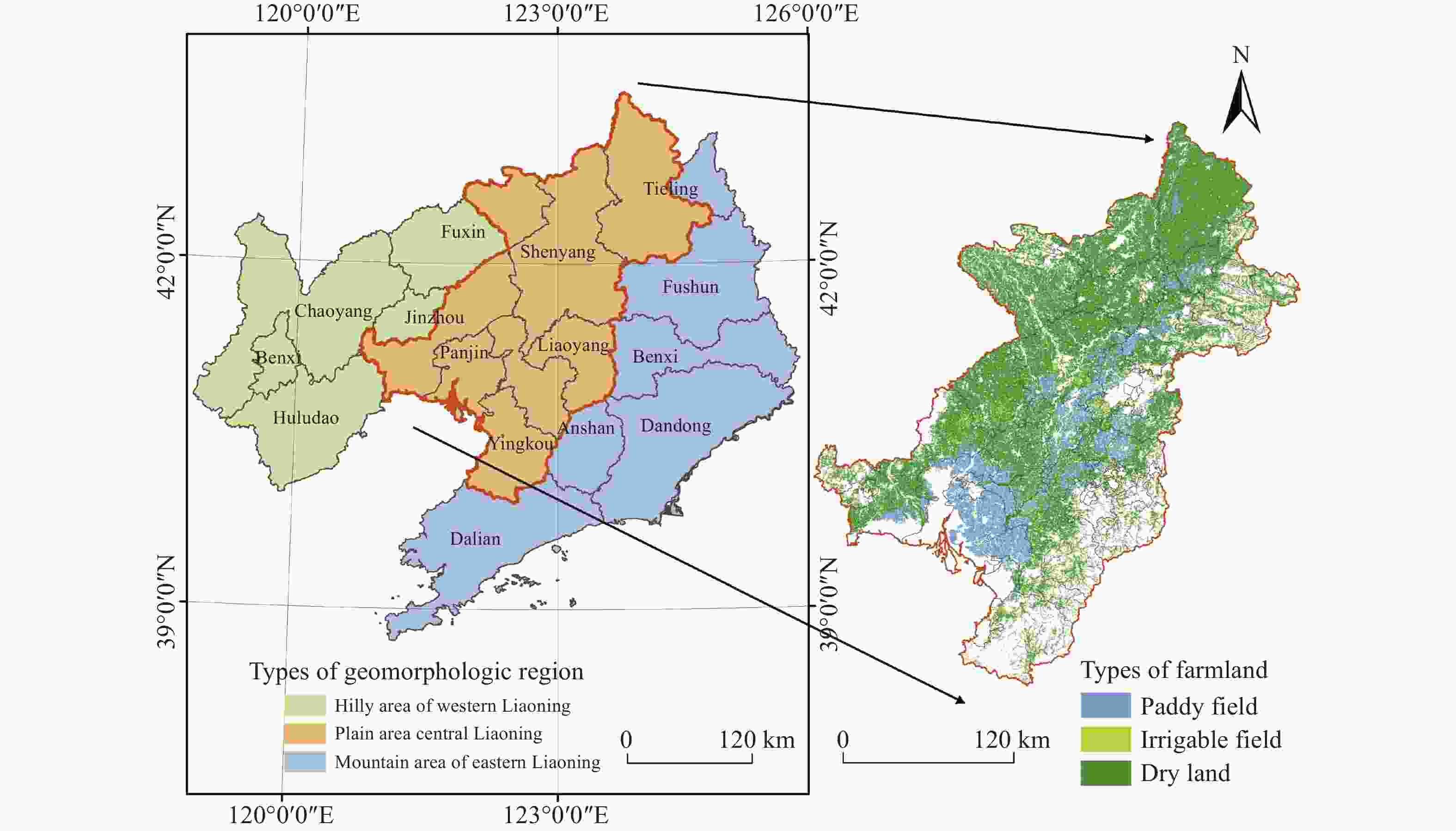
 下载:
下载:
